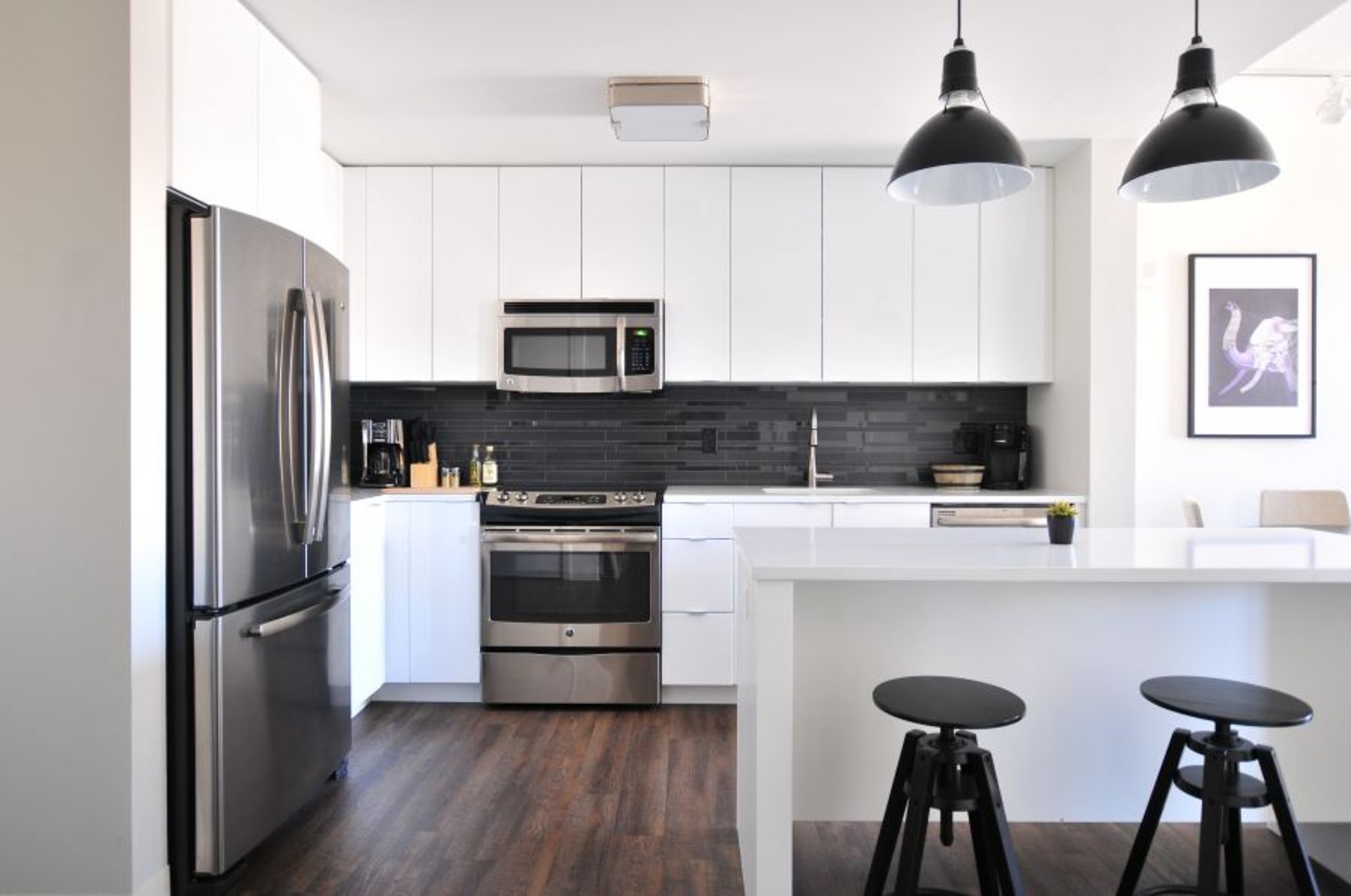What you need to know about putting hardwood floors in your kitchen!
21 Mar 2019
From food spills to dropped dishes, kitchens are notoriously tough on floors. Though tile has long been the traditional flooring material for our kitchens, some homeowners are swapping out cold materials for the warmth and beauty of wood. Before ripping out your kitchen tile in favour of hardwood, consider a few these factors.
When to consider wood over tile
When it comes to choosing wood flooring over tried-and-true tile, consider three things: your space, your lifestyle and your budget.
If your home is open-concept, wood floors offer a more spacious, coherent feel. If your kitchen is closed off, however, wood flooring may enhance the chopped up feeling of your rooms or be more trouble than they're worth.
If you cook a lot or have pets or children, you might want to avoid wood flooring, , which scratch easily and don't tend to fare as well in places with high moisture. Keep in mind if you have problems with leaky appliances, you should get them fixed before installing wood floors because water will also damage them. In addition, if you're on a budget, high-quality hardwood might be too expensive for your kitchen renovation.
Laminate
However, if you're dead set on the look of wood floors in the kitchen but can't afford or justify natural wood, laminate flooring is an option, with some major caveats. Laminate is an imitation of natural wood or stone flooring. It's more affordable, but unless you find a high-quality laminate, it doesn't quite look like the real thing. There's also the issue of moisture to contend with. Laminate is easily damaged by water, causing peeling and discolouration. You can avoid these issues by installing sheet vinyl or luxury vinyl plank (LVP), which is 100% waterproof.
While laminate has come a long way in terms of quality and lifespan, it generally doesn't last as long as hardwood floors, sometimes companies offer warranties of up to 25 years. That being said, once you damage laminate, you're stuck with the damage until you replace it. Thankfully, removing a section of laminate and replacing it is fairly simple, but if a catastrophic spill occurs—for example, your dishwasher floods—you may be in for a bigger job than you bargained for.
Keep in mind laminate typically won't add to your home's resale value in the same way wood, stone or tile will.
Solid vs. engineered hardwood
If you have the budget and the lifestyle to put in wood floors, you have two types available to you: solid hardwood and engineered wood.
Solid hardwood floors can be easily scratched and damaged. It's the most expensive flooring option but will also generally add the most to your home's resale value and, if cared for properly, last forever. If you decide to go with solid hardwood, choose a wood which ranks high on the hardness scale. You want to avoid softwood in the kitchen altogether, as softwood is prone to staining and damage and won't do well in a high-impact room.
Engineered hardwood is a great middle-ground alternative to laminate and solid wood, both in price and in quality. It has a very thin layer of wood veneer on the top followed by a few layers of plywood, so it's durable while still giving you the solid hardwood look you crave. This flooring won't last quite as long as properly cared for solid wood, but it's still very durable and the closest you can get to hardwood floors if solid wood doesn't fit your budget.
Both solid and engineered wood flooring can come in scraped or wire brushed finishes—smart options because the texture can help hide imperfections.
And while hardwood floors in living areas may be finished with traditional penetrating oils, kitchen floors will need a surface finish, such as polyurethane, to seal the wood surface and prevent water penetration.
A note on installation
Installing hardwood in the kitchen can be tricky; it needs to integrate well with cabinetry and the fewer gaps, the better off you'll be in terms of preventing water damage. Unless you're a pro, installing hardwood in the kitchen is not a DIY job. Also keep in mind prefinished hardwood, while the most durable, often has rounded, bevelled edges, which might mean more gaps during the installation process. A good contractor can try to mitigate these issues to give you a seamless floor.
Caring for your kitchen floors
If you opt for hardwood or engineered hardwood over tile floors, they'll generally require a bit more care and maintenance. Leaks and spills will need to be cleaned up right away. As a general rule, mop wood floors occasionally and do so with a slightly damp mop or towel. Never allow water to stand too long on your floors and be sure to sweep your floors regularly to keep the finish intact. Adding pads under chair and table legs will help protect floors from scratches.
Make sure you check your hardwood warranty before you install—some contracts are void for kitchen spaces or other areas where water could be a hazard, like laundry rooms.
No matter what flooring you choose, it should align with your home. Consider your taste, lifestyle and budget, and it won't be long before you're entertaining your friends and family in your Pinterest-worthy kitchen.
